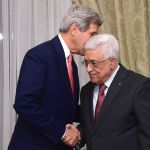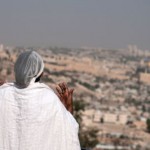“Who has ever heard of such things? Who has ever seen things like this? Can a country be born in a day or a nation be brought forth in a moment? Yet no sooner is Zion in labor than she gives birth to her children.” (Isaiah 66:8)
During the Six-Day War (June 5–10, 1967) the Israeli military captured territory that included East Jerusalem and Judea and Samaria, Israel’s ancient heartland, after the surrounding Arab nations mounted their considerable military might against Israel, a land with over 3,000 years of Biblical and Messianic history.
The Prophetic Truth about Judea and Samaria
We read in the Tanakh (Old Testament) that the Messiah Himself, would be born in a small Judean town called Bethlehem:
“As for you, Bethlehem of Ephrathah, even though you remain least among the clans of Judah, nevertheless, the one who rules in Israel for me will emerge from you. His existence has been from antiquity, even from eternity. (Micah 5:2)
And, indeed, it happened as prophesied:
“After Yeshua had been born in Bethlehem of Judea during the reign of King Herod, wise men arrived in Jerusalem from the east.” (Matthew 2:1)
Also in the Tanakh, God appeared to Abraham in Shechem, which today is a predominantly Muslim city called Nablus in Samaria, and declared, “To your offspring I will give this land.” (Genesis 12:7)

A view from Mount Gerizim of Mount Ebal in Samaria, the mountains on which the Israelites were commanded to pronounce the blessings and curses upon entering the Promised Land. Nablus, the Biblical Shechem, is located in between the mountains, where Abram built an altar to the Lord (Genesis 12:6–8; Deuteronomy 27).
God also told Abraham:
“Go, walk through the length and breadth of the land, for I am giving it to you. So Abram went to live near the great trees of Mamre at Hebron, where he pitched his tents. There he built an altar to the LORD.” (Genesis 13:17–18)
We also read in ancient Jewish literature of the Talmud (compendium of Rabbinic commentaries) the grandeur of Judea’s capital, Jerusalem, and the Holy Temple that once stood there:
“He who has not seen Jerusalem in its beauty, has not seen a beautiful great city in his whole life; and who has not seen the building of the Second Temple, has not seen a handsome building in his life.” (Babylonian Talmud: Tractate Sukkah chapter 5)
That description was given 2,000 years ago; today, Islamic fundamentalism is lobbying the world to rewrite history.

Two Holy Temples once stood in the capital of Judea, Jerusalem, on the Temple Mount. The first Temple was built by King Solomon and the second by King Herod, where Yeshua (Jesus) was dedicated to the Lord as a baby. (Photo source: Temple Institute YouTube capture).
The Revised History of Judea’s Temple Mount
On October 26, 2016 UNESCO’s World Heritage Committee voted by secret ballot with 10 in favor, 8 abstaining, and 2 against adopting Draft Resolution 40COM 7A.13. This was the third vote of approval by UNESCO in a two-week span, with only minor variations in drafts.
Drafted solely by Arab nations, the resolution refers to the Temple Mount only by its Muslim names “Al-Aqsa Mosque/Al-Haram Al-Sharif,” calling it “a Muslim holy site of worship.”
In the previous draft, the “three monotheistic religions” were mentioned. But in this final draft, not only did it entirely ignore any Christian connection, it also left out any relationship of the Temple Mount and Western Wall or Old City to Judaism.
Moreover, the resolution rebukes Israel’s archaeological studies near and in the Western Wall tunnels. The irony, as Times of Israel points out, is that the very evidence that Israel is uncovering from these digs—which prove a Jewish connection to Judea, Samaria, and Jerusalem—”may now be designated as destruction of the Muslim site.”
Another irony is that Muslim archaeology also verifies the Jewishness of the Temple Mount.

This writing on the wall in a mosque in Nuba of Judea proves that even the first Muslim conquerors of Jerusalem referred to the Dome of the Rock as Bayt al-Maqdis or a renewed Beit HaMikdash (Holy Temple). (YouTube capture, Assaf Avraham)
In the central mosque at the village of Nuba, just west of Hebron in Judea, an inscription on the wall reads that the building and all the territory around Nuba is an endowment for the “Bayt al-Maqdis,” which is the Arabic name for Beit HaMikdash or Holy Temple.
That Bayt al-Maqdis is another name for the Dome of the Rock that sits on the Temple Mount.
The inscription was dedicated by the Arab ruler who conquered Jerusalem in AD 638, Umar iben al-Khattab. So, early in their conquest in Jerusalem, the Muslims had a reverence for the Jewish Temples that once stood in the very spot of the Dome of the Rock. (Temple Mount Sifting Project)
Judea and Samaria: Prophecy Fulfilled
“Once more a remnant of the kingdom of Judah will take root below and bear fruit above.” (Isaiah 37:31)
Since the world is denying that the Holy Temple site has no Jewish connection, it also sees no Jewish connection to the larger territory of Judea and Samaria.
Israeli settlement in these territories began after the Six-Day War in 1967, and today there are nearly 500,000 religious and secular Israelis living throughout Judea and Samaria, including eastern Jerusalem. (Arutz Sheva)
While the world largely takes a dim view of Jewish settlement in this area, it is the fulfillment of many Bible prophecies:
“The days are coming, declares the LORD, when I will bring my people Israel and Judah back from captivity and restore them to the land I gave their ancestors to possess, says the LORD.”
Today there is a 4% growth rate in Jewish population in the territories, double that of the rest of Israel.
This is partly due to the high rate of birth among the Orthodox Haredi communities.
Former head of the Shomron (Samarian) Liaison Office, David Ha’iviri also pointed to the attractiveness of clean air, beautiful vistas, and cool climate, and then added,
“But aside from that, and even more important, there’s a godly process of fulfilling prophecy that’s beyond explanation. The prophets promised that the children of Israel would return to these mountains and rebuild these Jewish cities and Jewish towns. And that’s what’s happening.” (CBN)
“I will bring Judah and Israel back from captivity and will rebuild them as they were before.” (Jeremiah 33:7)
West Bank or Judea and Samaria: What’s in a Name?
The term West Bank (so named because the land is situated on the west bank of the Jordan River as opposed to Jordan’s territory on the east side) was labeled such only about 75 years ago.
The names Judea and Samaria, on the other hand, are ancient and well-established. Though smaller in size, their location roughly corresponds to the ancient Kingdoms of Israel and Judah, also known as the Northern and Southern Kingdoms.
These two kingdoms were created following the death of King Solomon when the 10 northern tribes refused to submit to his son, Rehoboam.
After the Northern Kingdom of Israel fell to the Assyrians in 720 BC, it was renamed Shomron or Samaria.
The Southern Kingdom of Yehudah (Judah) had a name change, as well. During the Hellenistic and Roman periods, it was called Judea.
Samaria includes land that was originally a part of the inheritance belonging to the tribes of Manasseh and Ephraim, and Judea encompasses territory allocated to the tribes of Benjamin and Judah.
During the British Mandate period, the area of Samaria was an administrative district with that same name.
Judea and Samaria: The Disputed Biblical Heartland
When the British Mandate ended in 1948, Israel declared its independence as a nation. With the British gone, the surrounding Arab nations of Jordan, Egypt, Lebanon and Syria attacked Israel.
As part of the peace agreement in 1949 between Israel and these invading nations, a demarcation or “Green” line was established that allowed Jordan to occupy East Jerusalem as well as Judea and Samaria (Yehudah and Shomron), while Egypt held the Gaza Strip.
This demarcation line was never officially a border, nor was a Palestinian entity ever created.
The Jordanian occupation, however, led to the desecration of Jewish holy sites, cemeteries, historic synagogues, as well as the expulsion of all Jewish residents.

In the “West Bank,” Judea is the region lying to the south of Jerusalem. The area north of Jerusalem is Samaria.
Jews were even barred from visiting the Temple site.
On June 5, 1967, following a mounting threat by the same nations that invaded in 1948 and an attack by Jordanian forces on West Jerusalem, Israel encircled the Old City of Jerusalem.
The IDF successfully pushed the Jordanian and Iraqi armed forces out of the West Bank and East Jerusalem and recaptured the Old City, including the Western Wall, Temple Mount and, finally, Judea and Samaria.
In the span of six days, what began as an attempt by Egypt, Syria and Jordan to destroy the nation of Israel, ended in a decisive victory for the 19-year old nation.
The victory led to the reunification of Jerusalem and the capture of Israel’s ancient Biblical heartland—the entire region lying between the Jordan River and what people now refer to as the 1967 border.
Though Arabs demand these territories back, even the names of Arab neighborhoods in Judea and Samaria, such as Bethlehem, Jericho, Hebron and others reaffirm the land’s Biblical Jewish roots.

Many key events in the Brit Chadashah (New Testament) occurred in Judea and Samaria. The Mount of Temptation where Yeshua (Jesus) was tempted (Matthew 4:8) is generally identified as Mount Quarantania, which is near Jericho.
The Tanakh (Old Testament) and Brit Chadashah (New Testament) record many events which took place in these ancient cities.
For example, Bethlehem is mentioned 44 times in the Bible and is the birthplace of King David and Yeshua HaMashiach (Jesus the Messiah).
The Arabic name for the Palestinian village El-Jib comes from the name Gibeon, where Joshua commanded the sun and moon to stop temporarily during battle:
“On the day the LORD gave the Amorites over to Israel, Joshua said to the LORD in the presence of Israel: ‘Sun, stand still over Gibeon, and you, moon, over the Valley of Aijalon.’” (Joshua 10:12)
Anata, which is just outside of Jerusalem is Anatot, where the Prophet Jeremiah lived.
“Jeremiah said, ‘The word of the LORD came to me: Hanamel son of Shallum your uncle is going to come to you and say, Buy my field at Anathoth [Anatot], because as nearest relative it is your right and duty to buy it.’” (Jeremiah 32:6–7)
Tequa (Tekoa) is the town of the Prophet Amos, whom God called to preach to the Northern Kingdom, particularly the cities of Samaria and Bethel (modern-day Beitin), which was once the site of the Holy Ark, although he was from the Southern Kingdom of Judea.
Hebron: The City of the Patriarchs
“Jacob came home to his father Isaac in Mamre, near Kiriath Arba (that is, Hebron), where Abraham and Isaac had stayed.” (Genesis 35:27)
Today, many people are aware of the Biblical and religious importance of the Old City of Jerusalem, but few realize the long, rich Jewish history in the disputed territories of Judea and Samaria.
Hebron, for instance, which is south of Jerusalem in Judea, has the oldest Jewish community in the world.
It was in Hebron that Abraham first resided after arriving in Canaan.
This ancient city is revered as the place where Abraham purchased a field to bury his wife Sarah in the Cave of Machpelah. (Genesis 23:19)
At that same site are also buried the Patriarchs Abraham, Isaac, and Jacob, as well as the Matriarchs Rebekah and Leah.
Hebron was also King David’s first capital. He was anointed as king here and then ruled from this city for seven years until he conquered Jerusalem.
“David also took the men who were with him, each with his family, and they settled in Hebron and its towns. Then the men of Judah came to Hebron, and there they anointed David king over the tribe of Judah.” (2 Samuel 2:3–4)
Even after Rome destroyed Jerusalem and burned the Second Temple in AD 70, the Jewish People have lived in Hebron more or less continuously throughout the Byzantine, Arab, Mameluke, and Ottoman periods.
During the British Mandate, violence against the Jews in Hebron grew.
In 1929, an Arab pogrom (often an officially condoned violent mob attack) caused the death of 67 Jews. In 1936, on the eve of the Palestinian Arab national revolt, the British Government moved the Jewish community out of Hebron as a safety precaution.
Immediately following the Six-Day War in 1967, the Jewish community of Hebron was re-established.
Today, over 8,000 Jews live in a community adjacent to the city with the Biblical name of Kiryat Arba, the original name of Hebron.
“Hebron used to be called Kiriath Arba after Arba, who was the greatest man among the Anakites.” (Joshua 14:15)

Following the 1995 Oslo Agreement and subsequent 1997 Hebron Agreement, Hebron was split into two sectors: H1, controlled by the Palestinian Authority, and H2, controlled by Israel.
United Nations Pressures Jews to Leave Judea and Samaria
The United Nations Security Council Resolution 242, which was adopted in November 1967 after the Six-Day War, calls for the withdrawal of Israeli forces from the “occupied territories” of Judea and Samaria.
In May 1968, Israel accepted the resolution when the Israeli ambassador told UN Security Council:
“My government has indicated its acceptance of the Security Council resolution for the promotion of agreement on the establishment of a just and lasting peace.”
This resolution paved the way for the Oslo Accords of 1993 and 1995, a series of agreements that transferred land to the Palestinian Arabs.
Following the Oslo Accords of 1993, many urban centers in Judea and Samaria came under the administrative control of the Palestinian Authority, including Jenin (where the IDF withdrawal in 2005 forced the dismantlement of several Jewish settlements), Bethlehem, Jericho, Shechem, Ramallah, and Hebron.

Israeli Prime Minister Yitzhak Rabin, United States President Bill Clinton, and PLO Chairman Yasser Arafat at the Oslo Accords signing ceremony on September 13, 1993.
The UN has called for other major settlement areas to be abandoned. These include the city of Ariel, which sits 10 miles east of the “pre-1967 border,” Modi’in a Jerusalem suburb of over 80,000, and Gush Etzion, a cluster of Israeli settlements located in the Judean Mountains directly south of Jerusalem and Bethlehem.
When Israel totally withdrew from Gaza in 2005, however, Hamas turned the seaside strip into a rocket launch site against Israel. Of course, the same would happen if Israel totally withdrew from Judea and Samaria today.
But the world continues to put pressure on Israel to give back to the Palestinians the land Jordan controlled before the Six-Day War in 1967, including the eastern half of Jerusalem.
This international body continues to consider all neighborhoods in Judea and Samaria illegal and destined to be included in a future Palestinian State, even those that now are a part of Jerusalem proper, such as Gilo, which is in southwestern East Jerusalem.
Most of Gilo’s land was legally purchased by the Jewish People before World War II. That land was never relinquished, but the UN still considers Jewish settlement here illegal.

While many around the globe call for a boycott of products made in Jewish settlements, such boycotts also result in the loss of Palestinian jobs, as many of these factories also employ Palestinians who work side by side with the Jewish People.
The truth is, however, that the Jewish People have been in the Holy Land for over 3,000 years, and the restoration of the nation of Israel and the return of the Jewish exiles is Bible prophecy fulfilled.
And the great majority of Arabs who call themselves Palestinians are here because of a massive 19th–20th century migration from Egypt, Syria, Lebanon, and other Muslim countries.
And while the world continues to call Judea and Samaria the “West Bank,” and the Jewish communities that live there “settlements,” this is the land that God promised to Abraham through Isaac and Jacob:
“The land I gave to Abraham and Isaac I also give to you [Jacob], and I will give this land to your descendants after you.” (Genesis 35:12)
And this is the land where Yeshua will return:
“Then the LORD will go out and fight against those nations as when he fights on a day of battle. On that day his feet shall stand on the Mount of Olives that lies before Jerusalem on the east, and the Mount of Olives shall be split in two from east to west by a very wide valley, so that one half of the Mount shall move northward, and the other half southward.” (Zechariah 14:3–4)








































